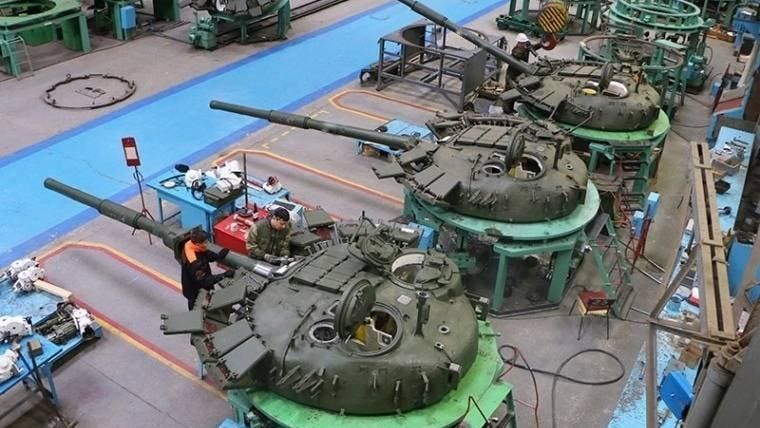Russia will resume production of new T-80 tanks—“from scratch,” according to Alexander Potapov, CEO of tank-maker Uralvagonzavod.
“This is the task at hand, or at least the military has set it for us,” Potapov told Zvezda. “And we are now actively interacting, working, exploring these issues with the Ministry of Industry and Trade, because this requires, accordingly, new capacities.”
Be skeptical. Uralvagonzavod’s factory in Omsk, in Siberia, hasn’t manufactured a new T-80 hull since 1991. And while the Omsk factory might still have the 32-year-old tooling, what it probably doesn’t have is suppliers for the tens of thousands of parts it would need to assemble a new T-80.
It’s clear why the Kremlin ostensibly would order Uralvagonzavod to restart production of the 46-ton, three-person T-80 with its 125-millimeter main gun. In its 19-month wider war on Ukraine, Russia has lost around 2,000 tanks—nearly half as many tanks as Russian forces had in front-line service in early 2022.
And while the Russians have made good many of their losses by restoring older tanks that were in storage—including potentially hundreds of early-model T-80s—the supply of stored tanks isn’t limitless.
It’s unclear which T-80 model Uralvagonzavod would produce, were it actually to produce brand-new tanks. The company makes “new” gas-turbine-powered T-80BVMs by installing modern optics and fire-controls in an old, pre-1991 hull. It also makes downgraded T-80BV Obr. 2023s with less sophisticated optics.
Regardless, manufacturing from-scratch T-80BVMs or T-80BV Obr. 2023s might require Uralvagonzavod to line up hundreds of subcontractors that haven’t built tank parts in three decades. There’s a reason Potapov stressed the need for “new capacities.”
It’s tough to do. Note that American tank-maker General Dynamics Land Systems also only builds “new” M-1 tanks on old hulls, the last of which it produced in 1996. When the U.S. Congressional Budget Office studied the American tank industry in 1993, it determined that restarting from-scratch production would take 56 months and cost $1.1 billion.
The Russian tank industry isn’t the American tank industry, but the CBO study at least underscores one important truth that should translate across the two industries. Restarting production of brand-new tanks, after decades, is expensive and time-consuming.
So when Potapov said Uralvagonzavod would resume the manufacture of new T-80s, he almost certainly didn’t mean soon.
Read the full article here





